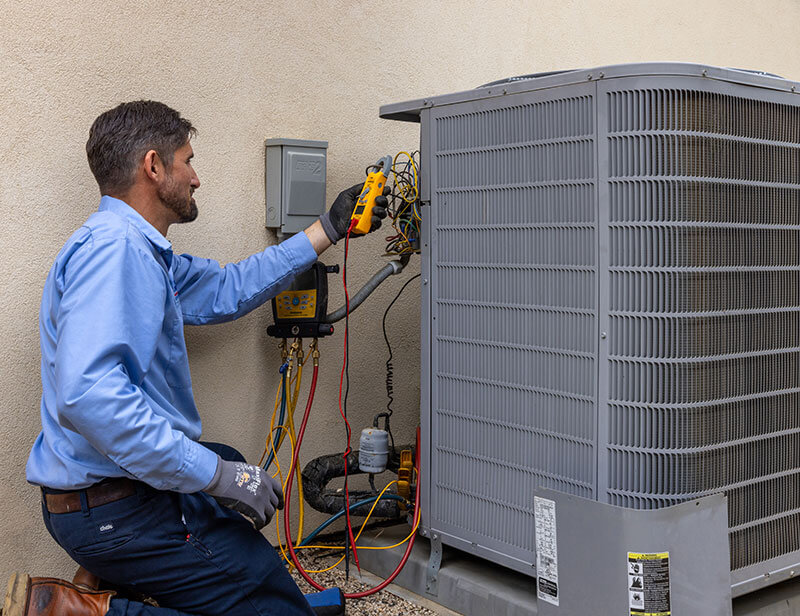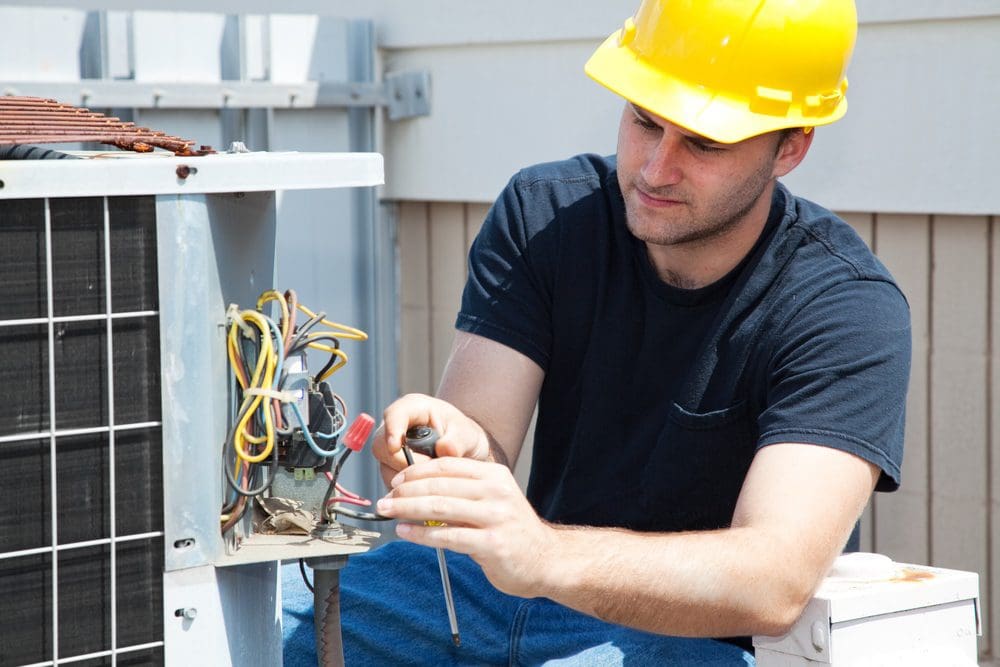How ductless mini splits Outperform Traditional HVAC Systems
How ductless mini splits Outperform Traditional HVAC Systems
Blog Article
How a Heat Pump and Furnace Work With Each Other to Optimize Your Home's Heating Performance
Comprehending exactly how a warm pump and heater collaborate is important for house owners looking for reliable heating services. Each system has its staminas, providing a balanced approach to home convenience. The heatpump excels in moderate temperatures, while the heating system supplies rapid heat during extreme cold. This harmony not just lowers power expenses but additionally boosts the lifespan of both home appliances. What elements influence this partnership, and exactly how can home owners optimize their benefits?
Comprehending Heat Pumps: Just How They Function
Although lots of people may be unknown with their internal functions, warmth pumps play an essential duty in modern-day home heating systems. These gadgets run by moving warm from one place to one more, making use of the concepts of thermodynamics. In chillier months, a heatpump extracts heat from the outside air, ground, or water, and transfers it indoors to heat the space. On the other hand, throughout warmer months, it can reverse the procedure, working as an a/c unit by eliminating heat from inside to the outside.Heat pumps include an evaporator, compressor, condenser, and growth shutoff. The refrigerant within the system soaks up warmth as it evaporates at reduced temperature levels and pressures. The compressor after that enhances the stress and temperature of the cooling agent, allowing it to launch warm as it condenses. This effective procedure can considerably reduce power consumption compared to traditional heating approaches, making heatpump a lasting selection for environment control in homes.
The Function of Heating Systems in Home Heating
Heaters play an essential function in home heating by supplying a reputable resource of heat throughout the colder months. They run by producing heat through combustion or electrical resistance, dispersing it throughout the home by means of air ducts or radiant systems. The performance of a heater is typically gauged by its Annual Gas Usage Efficiency (AFUE) ranking, which shows just how successfully the system converts gas into heat.Furnaces can utilize various power resources, consisting of gas, oil, gas, or electrical energy, enabling property owners to choose one of the most suitable choice for their requirements. Unlike heatpump, which may have a hard time in severe cool, heating systems keep regular performance, ensuring that interior temperatures continue to be comfortable no matter of outdoor problems. In addition, modern-day heaters commonly come furnished with sophisticated innovation, such as variable-speed blowers and clever thermostats, boosting their efficiency and responsiveness. This versatility makes heating systems a vital part in all-inclusive home heating techniques.

Benefits of Utilizing Both Systems With Each Other
Combining the strengths of both heating systems and heatpump can lead to a more effective and efficient home heating service. Using both systems enables property owners to take benefit of the heatpump's power effectiveness during milder temperatures while relying on the heater for more extreme cold problems. This twin approach can greatly reduce energy prices, as heatpump eat much less electrical energy than conventional home heating approaches when temperature levels are moderate.Additionally, utilizing both systems with each other can enhance comfort levels in the home. Warm pumps can provide regular, also heating, while furnaces can swiftly raise ambient temperatures when required. In addition, the assimilation of both systems can prolong the lifespan of devices by decreasing damage on each system, as they share the work. Inevitably, property owners can take pleasure in a balanced, economical home heating solution that changes flawlessly to differing weather, ensuring a warm and inviting home throughout the cold weather.
Just How Heat Pumps and Furnaces Complement Each Various Other
When house owners integrate heatpump and heating systems, they create a complementary heater that makes the most of performance and comfort. Heatpump operate by transferring warmth from the outside air or ground, making them extremely reliable in modest environments. They succeed throughout milder temperatures, supplying economical heating. On the other hand, furnaces create warmth via burning or electrical resistance, providing strong, instant warmth during severe chilly conditions.The combination of these two systems allows for vibrant changes based upon temperature level changes. During warmer months or milder winter season days, the heatpump can take the lead, conserving power and lowering prices. As temperatures drop, the furnace can flawlessly involve, making sure consistent heat throughout the home. This harmony not just optimizes power usage but also boosts the life expectancy of both systems, as each unit runs within its ideal efficiency variety. Together, they develop a well balanced environment that adjusts to varying environment needs.
Enhancing Efficiency: Tips for Homeowners
Home owners can improve their heating performance with a number of useful techniques. Developing a normal upkeep routine, integrating clever thermostat technology, and implementing effective insulation and sealing options are key steps. These procedures not just boost comfort but additionally decrease energy prices.
Routine Upkeep Schedule
To assure maximum heating performance, establishing a regular maintenance schedule is essential for any type of home. Homeowners need to prioritize routine inspections of both heatpump and heating systems to identify peak performance. This includes altering air filters every one to three months, as clogged up filters can significantly minimize efficiency. Furthermore, organizing specialist maintenance at the very least as soon as a year allows service technicians to recognize and attend to possible problems before they escalate. House owners should likewise cleanse the warmth pump's outdoor system to avoid particles buildup that can hinder air flow. By sticking to a normal upkeep schedule, home owners not just boost their heater' effectiveness but also prolong their life expectancy, causing greater comfort and minimized power expenses throughout the cooler months.
Smart Thermostat Assimilation
Incorporating a smart thermostat into a home heater can considerably enhance power effectiveness, particularly as it permits specific control over temperature settings. These gadgets can discover the homeowner's timetable and preferences, automatically readjusting the temperature level to optimize convenience while reducing power use. They can reduce home heating during times when the home is empty, minimizing unnecessary usage. Many clever thermostats also offer real-time energy use data, allowing homeowners to make educated choices regarding their home heating practices. In addition, remote access by means of smartphone apps permits users to change setups from anywhere, making sure the home is cozy upon return. Generally, smart thermostat combination not just improves convenience but significantly adds to power financial savings and efficiency.
Insulation and Securing Solutions
Smart thermostats play a vital duty in energy effectiveness, yet their performance can be greatly boosted by correct insulation and securing solutions. Home owners should focus on shielding floors, attics, visit this web-site and walls to lessen warmth loss. High-quality insulation materials, such as spray foam or fiberglass, can significantly enhance thermal resistance. In addition, securing spaces around home windows, air ducts, and doors prevents cool air seepage and warmth retreat. Weatherstripping and caulking are reliable methods for dealing with these leaks - furnace replacement. Routine evaluations for air leaks, along with the use of blower door tests, can help recognize trouble locations. By investing in insulation and sealing, homeowners can optimize the performance of their home heating systems, eventually causing minimized energy consumption and reduced utility costs
Common Misconceptions Concerning Heat Pumps and Furnaces
What misunderstandings surround heatpump and heaters? Several people erroneously believe that heatpump are inadequate in chillier climates. In fact, contemporary heatpump are made to operate efficiently also in low temperature levels, offering dependable home heating throughout wintertime. Another usual myth is that heaters are always extra effective than heatpump. This depends on the particular power sources and effectiveness rankings of the systems in inquiry. Some may additionally think that utilizing both systems simultaneously is unneeded, yet actually, this mix can optimize heating performance, particularly throughout severe weather. Furthermore, individuals typically think that heat pumps require continuous upkeep, when in truth, they have similar upkeep requires to traditional heating unit. By debunking these misconceptions, Get the facts house owners can make even more enlightened decisions concerning their heating options, ultimately causing boosted comfort and energy effectiveness in their homes.
Upkeep Factors To Consider for Combined Systems

Frequently Asked Concerns
Can Warmth Pumps Job Efficiently in Very Cold Climates?
Heat pumps can struggle in very cool environments due to minimized performance and heat extraction restrictions. Innovations in technology have led to designs made for far better efficiency in such problems, enhancing their practicality in extreme atmospheres.
Exactly How Long Do Heat Pumps and Furnaces Normally Last?
Warmth pumps typically last 15 to 20 years, while furnaces have a lifespan of 15 to 30 years. Regular maintenance can extend their longevity, guaranteeing efficient procedure and reducing the demand for premature substitutes.

What Is the Typical Cost of Setting Up Both Equipments?
The typical cost of installing both a heatpump and a heating system generally varies between $5,000 to $10,000 - heat pump replacement ooltewah tn. Aspects influencing this expense include system size, setup intricacy, and local labor rates
Are There Tax Obligation Incentives for Utilizing Energy-Efficient Home Heating Equipments?
Numerous home owners inquire regarding tax obligation incentives for energy-efficient heater. Numerous government try this site and state programs frequently use discounts or credit ratings, motivating the fostering of lasting modern technologies to lower energy consumption and promote environmental obligation.
Exactly how Do I Select the Right Dimension Warm Pump and Heater?
Picking the appropriate dimension warmth pump and furnace involves calculating the home's square footage, considering insulation quality, and assessing regional climate. Consulting a specialist can assure suitable system performance and energy performance based upon particular needs. ductless mini splits. Recognizing exactly how a heat pump and heater job together is crucial for homeowners looking for reliable heating services. In colder months, a heat pump removes warm from the outside air, ground, or water, and transfers it indoors to warm up the living area. When property owners integrate warmth pumps and heaters, they produce a complementary home heating system that optimizes effectiveness and comfort. Warmth pumps operate by moving warm from the outside air or ground, making them very reliable in moderate environments. Warm pumps can have a hard time in extremely cool climates due to reduced performance and warm extraction constraints
Report this page